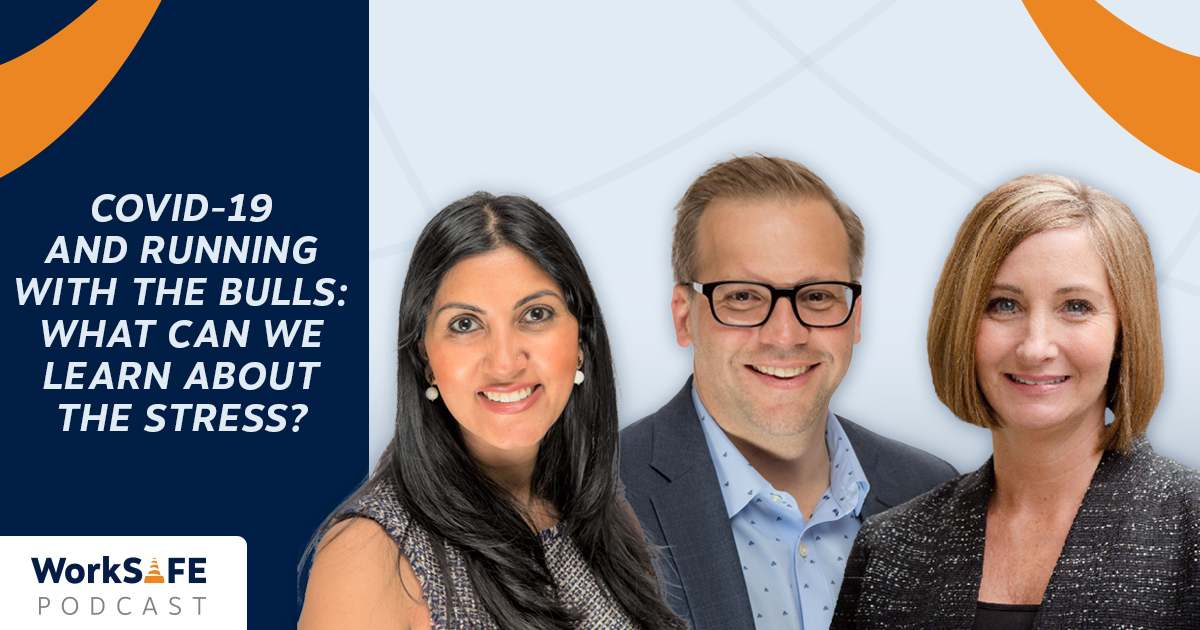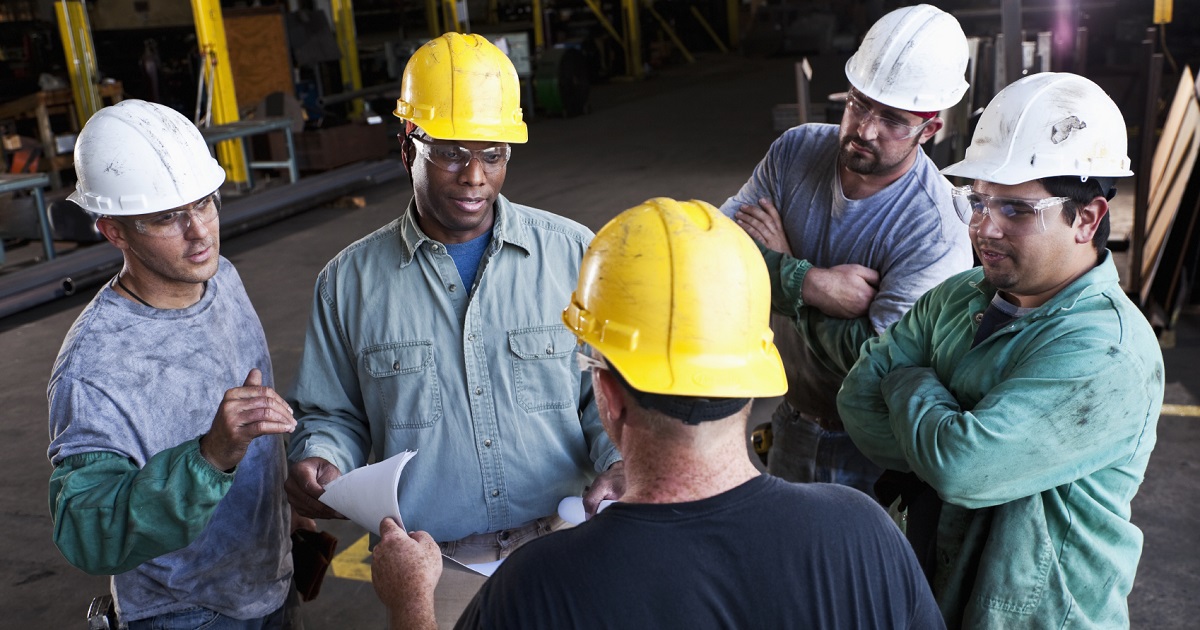For Media Inquiries
Contact Revee White, Director of Marketing and Communications at rwhite1@mem-ins.com or 573.499.4190.
Facing a global pandemic has changed our everyday habits. We wash our hands more. Masks are a must-have. Staying at least six feet apart is the new standard. When COVID-19 first began to impact the U.S., many were eager to help “flatten the curve.” Then, caution fatigue set in.
We’ve been practicing these new safety behaviors for several months. However, when it comes to COVID-19, there doesn’t seem to be an end in sight. Has COVID-19 changed the way we think about safety? How do we prevent ourselves from slacking on these important new safety measures?
On this episode of the WorkSAFE Podcast, we’re joined by two safety professionals. Joshua Mrozowsky and Rajni Walia are Vice Presidents at Dekra. Their company provides product testing and safety inspection services. They also offer safety consulting. Both have extensive backgrounds in safety, and Walia has a focus on human psychology.

First, we’ll talk about how COVID-19 stresses the human mind. Then, we’ll cover how this stress impacts our behavior. Finally, we’ll share ways employers can help staff intentionally slow down – and stay safe.
Listen to this episode on the WorkSAFE Podcast, or read the show notes below.
Running with the bulls: how COVID-19 compares
For many people, the thought of COVID-19 causes the same anxious rush as popular adrenaline activities. Skydivers face heart-pumping jumps from airplanes. Scuba divers must sink below the ocean’s surface. Mountain bikers tackle unknown trails. These activities involve a measure of uncertainty – and maybe a little fear. All feelings familiar to those experiencing the COVID-19 pandemic.
However, Mrozowsky points out, there is one key difference: careful preparation. Skydivers sit through hours of safety training. Scuba divers carry life-saving equipment. Mountain bikers may get in a little practice on an easier course before the final run. But COVID-19 arrived unexpectedly. No one was prepared.
Mrozowsky himself ran with the bulls in Pamplona, Spain. There was no training. No preparation. Only a group of people waiting anxiously for the bulls to chase them through the streets. He compares COVID-19 to running with the bulls. No one is sure of the way ahead. As a result, everyone is just trying to make the right decisions along the way.
How does COVID-19 affect the human mind?
For Walia, the COVID-19 experience is a lot like being on a roller coaster. There are ups and downs, twists and turns. Most roller coasters have a starting point and an end. “With COVID,” Walia said, “the challenge that we’re experiencing is that we don’t know when the end is.”
When COVID-19 began, many people were eager to do their part. Hands were frequently washed and sanitized. Masks were worn in public places. Social distancing happened everywhere, from restaurants to movie theaters.
But as the months went by, Walia explained, many people began to experience something called caution fatigue. Simply put, people eventually grow tired of having to be careful all of the time.
Humans crave normalcy. They want to return to their old habits. Over time, people become less careful. In the workplace, this kind of behavior leads to more injuries. Nowadays, it can lead to the spread of COVID-19. “Because we feel like we’ve got a handle on it, we’re about ready to go back to normalcy,” Walia added. But the reality is that we are far from ready to return to our pre-pandemic lives.

Caution fatigue leads to safety blind spots
If employees are notified of big events or changes, then they tend to handle them better. Mrozowsky and Walia have seen how well employees respond to situations they’ve been prepared for. They are more mindful of safety rules. But the real risks lie in the tasks and behaviors we form over time.
COVID-19 isn’t the only cause of caution fatigue. At Dekra, Mrozowsky discovered 81% of workplace injuries happen during routine work. Employees are more likely to be hurt doing the same tasks they do every day, especially when they need to be cautious and aware of risks all the time.
Tips for preventing caution fatigue
For many people, caution fatigue has set in at home – and at work. Old habits are hard to change. If we aren’t paying attention, then it is easy to miss important visual clues. These clues point to risks that are ahead.
For example, a wet floor presents a slip and fall hazard. If the floor is usually dry, then caution fatigue could cause an employee to overlook that new risk. “If I’m going out there with the expectation that everything will be just fine,” Walia explained, “That’s in fact what our brains will see.”
The BEGIN Strategy
Dekra recommends the BEGIN strategy to assist employees. It is especially helpful to employees who operate equipment. Each step helps check for work readiness:
- Breathe. Employees should start with a deep breath before beginning a task.
- Energize. A few quick movements help increase blood flow and heart rate.
- Gaze around. Look for any changes to the work area or any potential risks.
- Intensify. First, check the area between the knees and ground. This area is overlooked the most. Then, check above the head for any potential hazards. Finally, check the area around your body and at eye level.
- Notice broadly and deeply. Focus in and out like a camera. Look at the area ahead, then the area just around the machine or workspace.
Employees shouldn’t expect their workspace to be the same every day. They should conduct regular safety checks and look for risks. The BEGIN strategy helps them to be mindful before starting their work.

Good communication
Supervisors and managers should strive to have good communication with employees. Talk about employee tasks. Discuss the risks they face on the job. Mrozowsky recommends asking the following questions before starting work for the day:
- How is your work different now? COVID-19 caused changes in a lot of industries. Some workers need to wear gloves or masks, and didn’t before. Others have to social distance. Identify how an employee’s job has changed.
- Where could you get hurt? Every workplace has risks, big and small. Walk through them with the employee. Can they identify hazards? Do they know the safety rules?
- How would you protect yourself during this task? Employees should wear any personal protective equipment they need to do their job. Do they know how to operate their machine correctly? Are they aware of emergency procedures in case there is an incident?
COVID-19 has transformed the way work is done across the country. As a result, many companies have learned how to work safer. They bring in only essential staff. Safety measures are carefully thought out and intentional. But isolation and caution fatigue have caused many people to slip up when it comes to safety.
Caution fatigue has caused many people to slip up when it comes to safety. Tweet this. >
This isn’t unusual. Mrozowsky pointed out that while we can focus on being safe, humans can’t maintain that sharp focus all the time. COVID-19 introduced even more safety concerns. That’s why it’s essential to be mindful while living and working, checking in for safety risks each day.
For free sample policies and meeting materials that can help keep your employees safe, visit our Resource Library. Then, listen to other great episodes of the WorkSAFE Podcast.